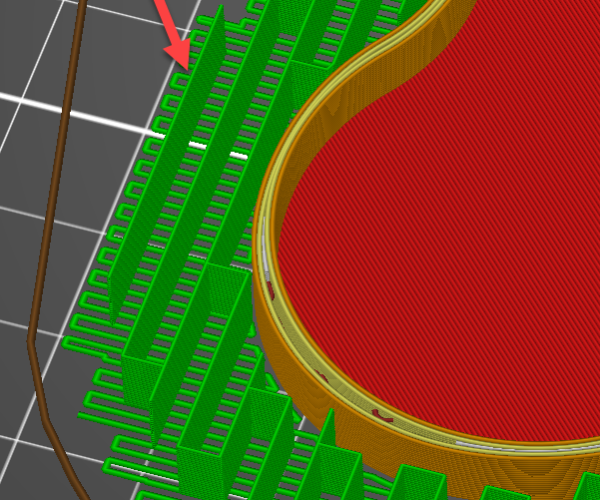Weird support generated
Hi,
the PrusaSlicer 2.2.0 generated a very weird support. All the rest is connected to its neighbour, just this one grows alone.
Of course I spotted this well into the print so I am really curious whether this will hold or break due to the acceleration forces. The source file is attached (I hope the 3mf file contains everything relevant). Please don't laugh, this was modeled on a "good enough" basis 😉
This is PrusaSlicer 2.2.0 for Linux and mk3s.
Thanks
RE: Weird support generated
Hm pretty sure I did attach the file.. where is it gone? ... Trying again as zip
RE: Weird support generated
My experience is that it will probably hold as long as the first layer under it is good and solid.
You can adjust the support parameters in PrusaSlicer to increase the width and spacing of the supports if needed. Here are the parameters that have been posted here off and on which work well for me and apparently for others:
0.25mm z distance.
75% xy distance.
3mm support spacing.
4 interface layers.
0.2mm interface layer spacing.
RE: Weird support generated
@jsw
These settings work great. My first few times using PrusaSlicer I was shocked by the amount of supports it produces compared to, say, Cura. I still feel it is excessive but with these settings, the supports can be removed like butter.
Formerly known on this forum as @fuchsr -- https://foxrun3d.com/
RE: Weird support generated
Thanks.
Those are not mine, but I honestly don't remember who posted those first, as it was some time ago (if you are reading this, please refresh my memory and accept my apology). The big one is the Z distance, which defaults to .1 in PrusaSlicer, intended for soluble supports.
I have set those same parameters into Cura, and I want to give that a good try-out, as somebody posted here a while back that when supports are used under bridged areas, Cura tends to produce less-ugly undersides on the main piece. I'm waiting for an opportunity to try that out.
I have used those numbers with Cura in a noncritical support situation and found that those supports break away as easily as those done with PrusaSlicer.
RE: Weird support generated
Just be aware that increasing the Z distance to 0.25mm makes support easier to remove, but also results in a somewhat rougher supported surface. 0.25mm works very well for things like miniatures. If you're supporting large, flat surface, you might want to experiment with varying the Z distance. Also experiment with variable layer heights as that can affect the thickness of supports.
and miscellaneous other tech projects
He is intelligent, but not experienced. His pattern indicates two dimensional thinking. -- Spock in Star Trek: The Wrath of Khan
